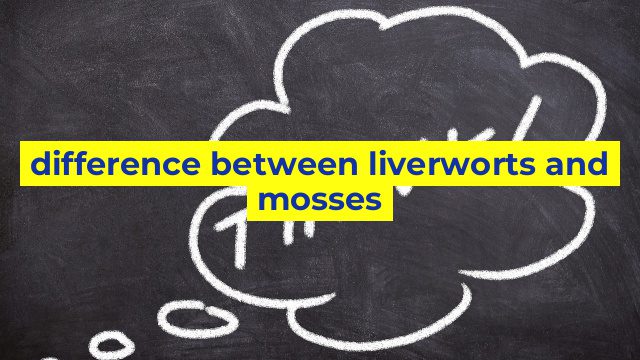The Differences between Liverworts and Mosses
Mosses and liverworts are two types of small, simple plants that thrive in moist environments. Although they share some similarities, there are several differences between these two species. Let’s take a closer look at the distinguishing features of liverworts and mosses.
Appearance
Mosses and liverworts are both nonvascular plants that reproduce by spores. Mosses have small, leaf-like structures that are arranged in a densely packed cluster. The leaves of mosses are usually long and thin, with one vein running down the center. Liverworts, on the other hand, typically have distinct, flat thalli that look like a lobed leaf. Liverworts come in many different shapes, sizes, and colors, and some may resemble mosses closely.
Habitat
Both mosses and liverworts love moist environments and can be found in a variety of habitats, including forests, bogs, swamps, and riverbanks. However, liverworts are more commonly found in tropical environments and in areas with high humidity. Mosses, on the other hand, can grow in a broader range of environments, including arctic tundra and desert regions.
Ecosystem Benefits
Mosses and liverworts play an essential role in the ecosystem, especially in regulating water flow and supporting biodiversity. Mosses, in particular, are highly valued for their ability to absorb and retain water. Mosses act as a sponge and can hold up to 20 times their weight in water. This absorbent ability helps to reduce soil erosion and provides a vital source of moisture for other plants and animals. Liverworts, on the other hand, help to fix nitrogen and provide food for herbivores like insects, snails, and slugs.
Cultural Importance
Mosses and liverwort have long been important to human culture, both for their beauty and their medicinal properties. In some cultures, mosses have been used as a source of fuel, bedding, and even as insulation. In traditional medicine, liverworts were used to treat a variety of illnesses ranging from respiratory problems to digestive disorders.
Conclusion
In conclusion, although mosses and liverworts share some similarities, including their love for moist environments, there are many differences in their appearance, habitat, and ecological and cultural importance. These simple but fascinating plants play an essential role in the ecosystem and, thus, need to be appreciated by all.
Table difference between liverworts and mosses
| Attribute | Liverworts | Mosses |
|---|---|---|
| Number of species | Approximately 8,000 | Approximately 12,000 |
| Size | Usually small, up to 20 cm tall | Can range from small to large, up to 50 cm tall |
| Physical appearance | Leafy or thallose (flat and ribbon-like) with no true roots, stems or leaves | Leafy with stems and leaves; some mosses have no true roots |
| Habitat | Found in damp habitats, such as wetlands, bogs, and riverbanks | Found in damp habitats, such as forests, wetlands, and tundra |
| Mechanism of reproduction | Sexual and asexual | Sexual and asexual |


